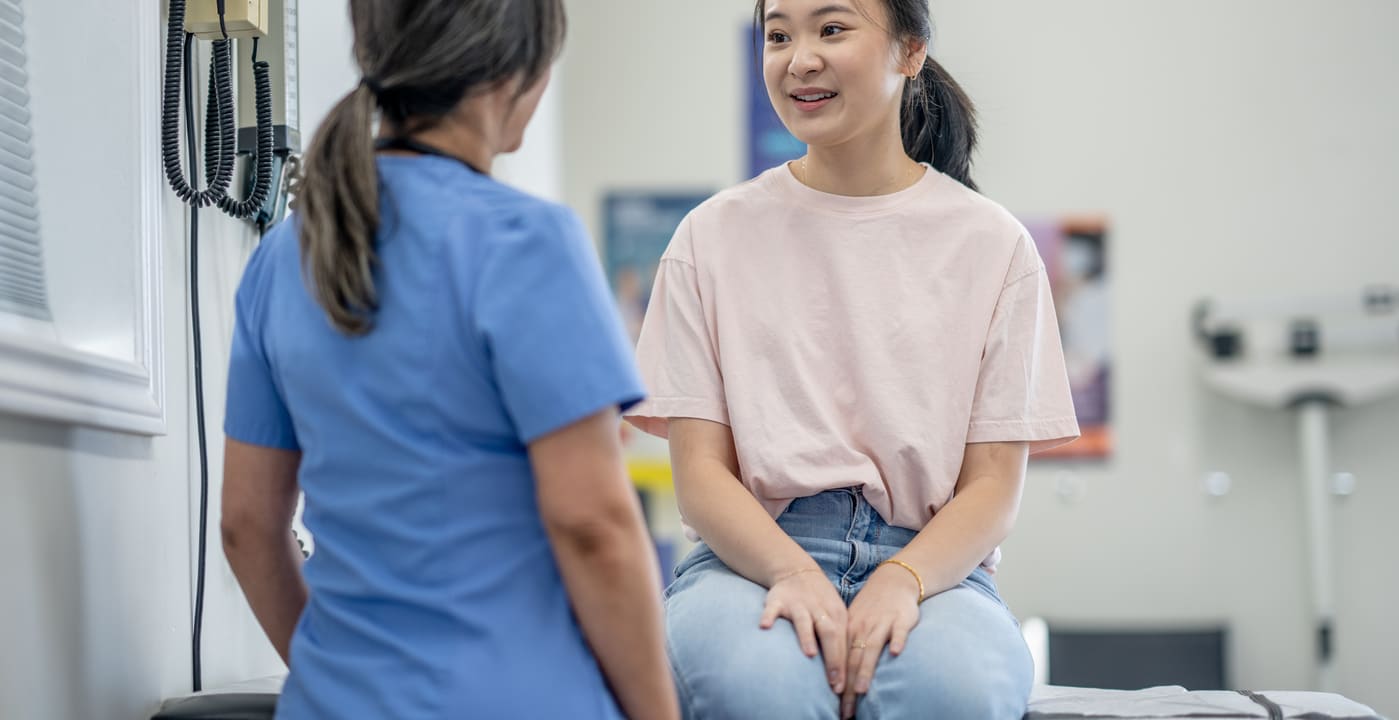Talking to your teen about period pain

At a glance
- Mild cramps and mood swings are to be expected
- If a period leaves you bedridden or in severe pain, talk with your provider
- Learn your norm, track your triggers and don’t let a period take over your life
So, your child started their period. Now what?
There are conversations to have about what to expect, which products to use and how to track cycles to avoid surprises at school. It’s a big change, but it doesn’t have to bring life to a halt each month.
Most girls will experience some level of cramps, mood swings or overall discomfort, but if it’s interfering with their ability to go about their day, it’s time to see a doctor or other health care provider.
What to expect
Common side effects include mild to moderate cramps, mood swings, headaches, bloating, fatigue and acne.
“Menstrual cramps are hard to define. You can feel them in different places like your back, pelvis or legs,” says Carri Holton, MSN, ARNP, WHNP, Mary Bridge Children’s Pediatric and Adolescent Gynecology. “It’s very subjective and different for everyone. Some don’t get cramps at all, and that can be normal, too.”
For most teens, over-the-counter pain relievers like Tylenol, Pamprin or Midol, once or twice a day on their most painful days, will suffice, says Angie Hamouie, MD, MPH, Mary Bridge Children’s Pediatric and Adolescent Gynecology. Others may find relief from heat packs, warm baths, low- to medium-intensity exercise like walking or yoga, drinking herbal tea, or increasing iron-rich food intake.
Don’t let the pain take over
“Pain is abnormal when it prevents you from living your life — missing school, not able to hang out with friends or spend quality time with others,” Dr. Hamouie says. “We use these markers of whether it’s impacting your ability to go about your day, but even if you feel like it’s more painful than you think it should be, don’t be afraid to go the doctor.”
Other key indicators that you should talk with a provider include:
- Sharp, stabbing pain in one spot that doesn’t go away with pain relievers
- Not feeling relief from over-the-counter pain relievers despite taking the maximum dosage
- Pain not limited to the time around their period, instead happening throughout the month or during bowel movements
- Sudden changes or increase in pain (once learning what their typical cycle feels like)
“Some girls can deal with a higher level of cramps and be fine, while someone else will miss multiple days of school,” Holton explains. “Some level is common, but we can help.”
Either way, they don’t have to live like that, she adds. A provider can offer other options to manage symptoms, including higher-dosage pain relievers or birth control that can lighten the intensity of their period.
Build self-awareness young
The best thing you can do for your child is empower them to listen to their body and know when to ask for help. That includes learning how to track their cycles, spot potential red flags like hemorrhagic cyst pain (most common during the middle of the cycle) or describe their pain type and level to ensure it’s not a gut or muscle issue, Dr. Hamouie says.
“A lot of it is education in helping young girls feel control over their own health care and gain insight into how their body works,” she adds.
And just because your child may be experiencing painful or irregular periods these first few months, it doesn’t mean something is wrong, Holton adds. But it’s generally better to ask your provider and ease your worries than continue living with the pain and unknown.
What's next
- Is your child too embarrassed to talk to you? Find them a provider
- Wondering if your pain is normal or not? We also care for adults
- Get all your women’s health questions answered




